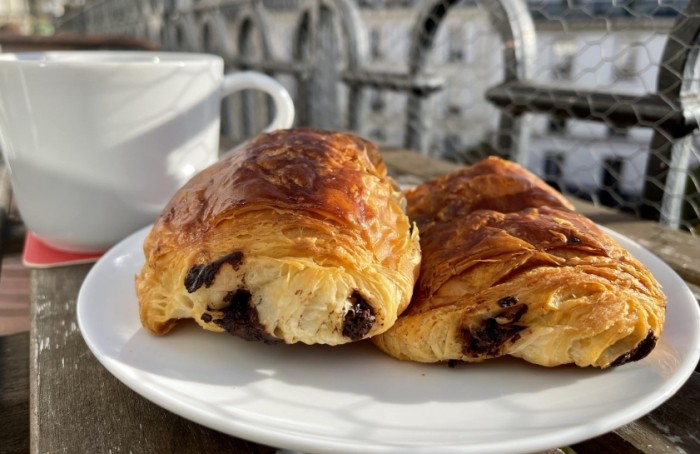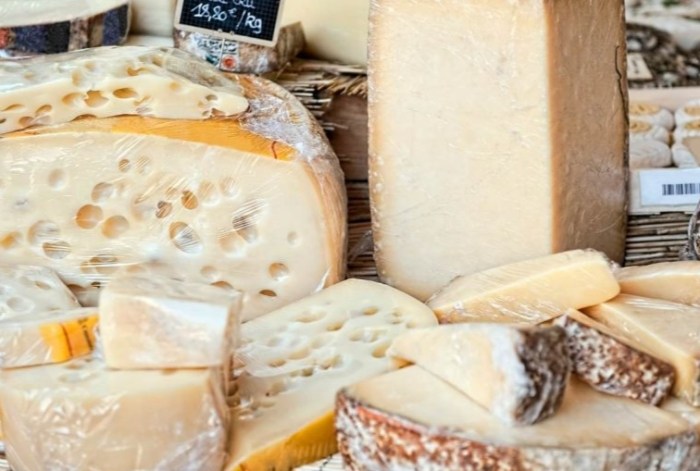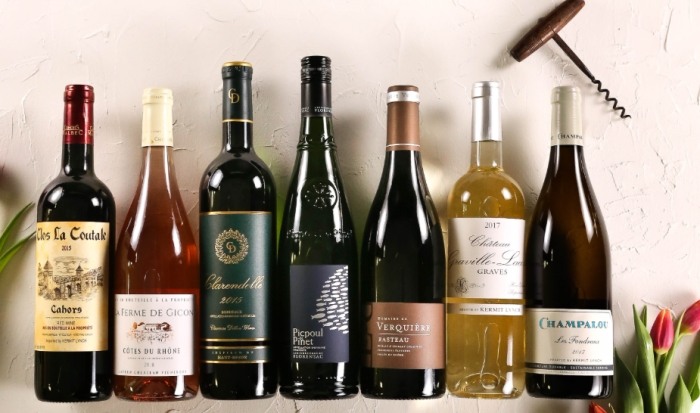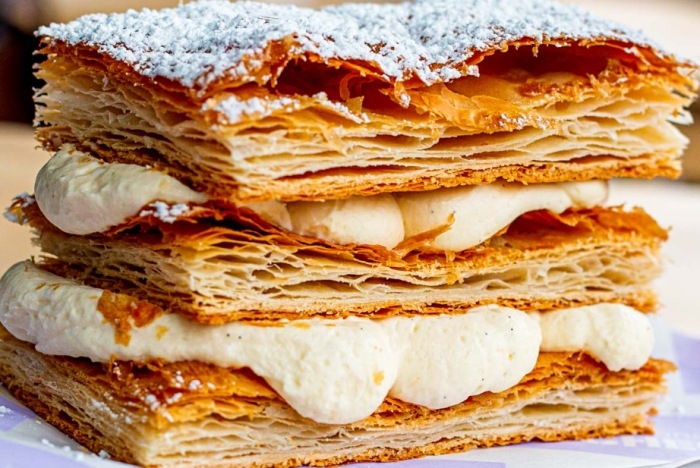Well Known Food in France: Taste Like a Local in Paris & Beyond
Advertisements
What are the most well known food in France? Discover iconic French dishes like croissants, boeuf bourguignon, and macarons. Learn where to find authentic coq au vin, ratatouille, and crème brûlée across Paris, Lyon, and Provence in this 2025 culinary guide.
Table of Contents
As a proud French local, I am thrilled to take you on a culinary adventure through the heart of France, exploring the well-known foods that have made our country a gastronomic paradise. From the bustling streets of Paris to the sun-drenched vineyards of Bordeaux, French cuisine is a rich tapestry of flavors, traditions, and techniques that have been perfected over centuries.
The Essence of French Cuisine

Understanding the Core Principles
French cuisine is renowned worldwide for its emphasis on quality ingredients, meticulous preparation, and the art of balancing flavors. It is not just about eating; it is an experience that engages all the senses. Here are some key principles that define French cooking:
- Quality Ingredients: French chefs swear by using only the freshest and finest ingredients. Whether it's the butter from Normandy, the cheese from the Alps, or the wine from Burgundy, the origin and quality of each component are of utmost importance.
- Seasonality: French cuisine is deeply rooted in the seasons. Menus change with the availability of fresh produce, ensuring that dishes are at their peak flavor. Spring brings tender asparagus and strawberries, summer offers ripe tomatoes and melons, autumn is the time for mushrooms and chestnuts, and winter features hearty stews and root vegetables.
- Technique: French cooking techniques are renowned for their precision and sophistication. From the delicate art of sauces (such as béchamel, velouté, and espagnole) to the complex process of making pâtés and terrines, mastering these techniques is a badge of honor for any French chef.
Regional Diversity
France is a vast country with diverse regions, each with its own unique culinary traditions. Here's a glimpse into some of the most famous regional cuisines:
- Alsace: Known for its Germanic influences, Alsace cuisine features hearty dishes like choucroute garnie (sauerkraut with sausages and meats), flammekueche (a thin, crispy tart topped with cream, onions, and bacon), and kougelhopf (a sweet, yeast cake).
- Bordeaux: This wine region is famous for its rich, meaty stews, such as cassoulet (a slow-cooked dish made with white beans, sausages, and duck confit) and entrecôte Bordelaise (a steak served with a red wine sauce).
- Brittany: Brittany is the land of seafood and buckwheat pancakes. Dishes like moules marinières (mussels cooked in white wine and garlic) and galettes (savory buckwheat pancakes filled with ham, cheese, and egg) are staples here.
- Provence: With its Mediterranean climate, Provence cuisine is all about fresh herbs, olive oil, and sun-kissed vegetables. Dishes like ratatouille (a vegetable stew), bouillabaisse (a fish stew), and tapenade (an olive spread) are popular choices.
Iconic French Dishes

The Classics
Some dishes have become synonymous with French cuisine and are enjoyed by people all over the world. Here are a few of the most iconic:
- Coq au Vin
- History and Origin: Coq au vin is a classic French dish that originated in the Burgundy region. It was traditionally made with a rooster, but today, chicken is more commonly used. The dish is said to have been created to tenderize tough meat by cooking it in wine.
- Ingredients and Preparation: The key ingredients include chicken, red wine (usually from Burgundy), bacon, mushrooms, onions, and garlic. The chicken is browned in a pan, then cooked slowly in the wine sauce with the other ingredients until tender and flavorful.
- Serving Suggestions: Coq au vin is often served with mashed potatoes, rice, or crusty bread to soak up the delicious sauce.
- Bouillabaisse
- History and Origin: Bouillabaisse is a traditional fish stew from Marseille, a port city in the south of France. It was originally made by fishermen using the less desirable fish that they couldn't sell at the market.
- Ingredients and Preparation: The stew typically includes a variety of fish and shellfish, such as rockfish, monkfish, mussels, and clams, cooked in a broth made with tomatoes, onions, garlic, saffron, and fennel. The dish is traditionally served with rouille (a garlic and saffron mayonnaise) and croutons.
- Serving Suggestions: Bouillabaisse is best enjoyed with a glass of dry white wine from Provence.
- Croissant
- History and Origin: The croissant is a beloved French pastry that has its roots in Austria. It was introduced to France in the 19th century and quickly became a staple of French breakfasts.
- Ingredients and Preparation: Croissants are made from a yeast-leavened dough that is layered with butter and folded multiple times to create a flaky texture. The dough is then shaped into a crescent and baked until golden brown.
- Serving Suggestions: Croissants are often enjoyed with a cup of coffee or hot chocolate and can be filled with jam, chocolate, or almond paste.
Regional Specialties
In addition to the classic dishes, each region of France has its own unique specialties that are worth seeking out. Here are a few examples:
- Alsace: Tarte Flambée
- Description: Tarte flambée, also known as flammekueche, is a thin, crispy tart topped with cream, onions, and bacon. It is similar to a pizza but has a lighter, more delicate crust.
- Preparation: The dough is rolled out very thin and spread with a layer of fromage blanc (a fresh, soft cheese) or crème fraîche. Onions and bacon are then added on top, and the tart is baked in a very hot oven until the crust is golden and the toppings are bubbly.
- Variations: Some variations of tarte flambée include adding mushrooms, leeks, or cheese to the toppings.
- Bordeaux: Canelés
- Description: Canelés are small, cylindrical cakes with a caramelized crust and a soft, custard-like interior. They are a specialty of the Bordeaux region and are often enjoyed with a glass of sweet wine.
- Preparation: The batter is made with milk, eggs, sugar, flour, and vanilla, and is flavored with rum. The batter is poured into copper molds and baked until the crust is golden and crispy.
- History: Canelés were originally made by nuns in the convents of Bordeaux using the egg whites left over from making clarified butter. The egg yolks were used to make the canelés.
- Brittany: Kouign Amann
- Description: Kouign amann is a rich, buttery pastry from Brittany that is made by layering dough with butter and sugar and then baking it until the sugar caramelizes. It has a flaky, croissant-like texture and a sweet, caramelized flavor.
- Preparation: The dough is rolled out and folded multiple times with layers of butter and sugar. It is then shaped into a round and baked in a hot oven until the crust is golden and the sugar has melted and formed a caramelized layer.
- Serving Suggestions: Kouign amann is best enjoyed warm, with a cup of coffee or tea.
French Cheeses: A World of Flavors

The Importance of Cheese in French Culture
Cheese is an integral part of French cuisine and culture. It is enjoyed at every meal, from breakfast to dinner, and is often served as a course on its own. France is home to over 1,000 different types of cheese, each with its own unique flavor, texture, and origin.
Famous French Cheeses
Here is a table showcasing some of the most famous French cheeses, along with their regions of origin and descriptions:
| Cheese Name | Region of Origin | Description |
|---|---|---|
| Camembert | Normandy | A soft, creamy cheese with a bloomy rind. It has a mild, buttery flavor and a smooth texture. |
| Brie | Île-de-France | Similar to Camembert, Brie is a soft cheese with a bloomy rind. It has a slightly nutty flavor and a rich, creamy texture. |
| Roquefort | Midi-Pyrénées | A blue cheese made from sheep's milk. It has a sharp, tangy flavor and a crumbly texture. |
| Comté | Franche-Comté | A hard, nutty cheese made from cow's milk. It has a complex flavor that develops with age and a firm, dense texture. |
| Reblochon | Savoie | A soft, creamy cheese with a washed rind. It has a mild, milky flavor and a smooth, buttery texture. |
Cheese Pairings
Pairing cheese with the right wine or bread can enhance its flavors and create a truly memorable dining experience. Here are some general guidelines for cheese pairings:
- Soft Cheeses: Soft cheeses like Camembert and Brie pair well with light, fruity white wines like Chablis or Sancerre. They also go well with crusty bread or fresh fruit.
- Blue Cheeses: Blue cheeses like Roquefort pair well with sweet wines like Sauternes or Port. They can also be enjoyed with nuts or honey.
- Hard Cheeses: Hard cheeses like Comté pair well with full-bodied red wines like Burgundy or Bordeaux. They are also delicious when served with crackers or crusty bread.
French Wines: The Perfect Accompaniment

The Role of Wine in French Cuisine
Wine is an essential component of French cuisine and is often paired with food to enhance the flavors of both. France is one of the world's leading wine producers, with a long history of winemaking and a diverse range of wine regions.
Famous French Wine Regions
Here is a table showcasing some of the most famous French wine regions, along with their signature grape varieties and wine styles:
| Wine Region | Signature Grape Varieties | Wine Styles |
|---|---|---|
| Bordeaux | Cabernet Sauvignon, Merlot, Cabernet Franc | Red wines that are full-bodied, complex, and age-worthy. They often have flavors of blackcurrant, cedar, and tobacco. |
| Burgundy | Pinot Noir, Chardonnay | Red wines made from Pinot Noir are light to medium-bodied, with flavors of cherry, raspberry, and earth. White wines made from Chardonnay are rich, buttery, and often aged in oak barrels. |
| Champagne | Chardonnay, Pinot Noir, Pinot Meunier | Sparkling wines that are made using the traditional méthode champenoise. They are known for their fine bubbles, crisp acidity, and flavors of citrus, apple, and brioche. |
| Rhône Valley | Syrah, Grenache, Mourvèdre | Red wines that are full-bodied, spicy, and often have flavors of black pepper, licorice, and garrigue (a Mediterranean herb). White wines made from Viognier are aromatic and floral. |
Wine Pairing Tips
Pairing wine with food can be a complex art, but here are some general tips to get you started:
- Red Wine with Red Meat: Red wines generally pair well with red meats like beef, lamb, and game. The tannins in red wine help to cut through the richness of the meat and enhance its flavors.
- White Wine with Fish and Poultry: White wines are a great match for fish, poultry, and light dishes. Their acidity can help to balance the flavors of these foods and cleanse the palate.
- Sparkling Wine with Appetizers: Sparkling wines like Champagne are perfect for pairing with appetizers like oysters, caviar, and canapés. Their bubbles and acidity can help to refresh the palate between bites.
French Desserts: Sweet Endings

The Art of French Pastry
French desserts are known for their elegance, sophistication, and rich flavors. From delicate macarons to decadent éclairs, French pastries are a true work of art. Here are a few of the most famous French desserts:
- Macarons
- History and Origin: Macarons are small, colorful cookies made from almond flour, egg whites, and sugar. They originated in Italy but were popularized in France in the 19th century.
- Ingredients and Preparation: The cookies are made by folding almond flour and powdered sugar into whipped egg whites to create a smooth, glossy batter. The batter is then piped into small circles and baked until the outside is crisp and the inside is chewy. Macarons are often filled with ganache, buttercream, or jam.
- Flavors: Macarons come in a wide variety of flavors, from classic vanilla and chocolate to more exotic flavors like rose, lavender, and pistachio.
- Éclairs
- History and Origin: Éclairs are long, thin pastries filled with pastry cream and topped with chocolate glaze. They were invented in France in the 19th century and have since become a popular dessert around the world.
- Ingredients and Preparation: The pastry is made from choux dough, which is piped into long strips and baked until golden and puffy. The éclairs are then filled with pastry cream made from milk, eggs, sugar, and flour, and topped with a rich chocolate glaze.
- Variations: Some variations of éclairs include filling them with coffee-flavored pastry cream or topping them with caramel instead of chocolate.
- Crème Brûlée
- History and Origin: Crème brûlée is a classic French dessert made from custard topped with a layer of caramelized sugar. It originated in France in the 17th century and is still a favorite today.
- Ingredients and Preparation: The custard is made from cream, egg yolks, sugar, and vanilla. It is baked in a water bath until set, then chilled. Before serving, a layer of sugar is sprinkled on top and caramelized with a torch or under the broiler.
- Serving Suggestions: Crème brûlée is best enjoyed cold, with a spoon to crack through the caramelized sugar and dig into the creamy custard below.
Regional Dessert Specialties
In addition to the classic desserts, each region of France has its own unique sweet treats. Here are a few examples:
- Alsace: Kugelhopf
- Description: Kugelhopf is a sweet, yeast cake that is similar to a bundt cake. It is made with flour, eggs, sugar, butter, and yeast, and is often flavored with raisins, almonds, and lemon zest.
- Preparation: The dough is mixed and allowed to rise, then poured into a special kugelhopf mold and baked until golden brown. The cake is traditionally dusted with powdered sugar before serving.
- Occasions: Kugelhopf is often enjoyed for breakfast or as a snack with coffee or tea.
- Normandy: Tarte Tatin
- Description: Tarte Tatin is an upside-down apple tart that is named after the Tatin sisters, who invented it in the 19th century. It is made by caramelizing apples in butter and sugar, then covering them with a pastry crust and baking until the crust is golden and the apples are tender.
- Preparation: The apples are peeled, cored, and sliced, then cooked in a pan with butter and sugar until they are soft and caramelized. The pastry crust is placed on top of the apples, and the tart is baked in the oven. It is then inverted onto a plate before serving.
- Variations: Some variations of tarte Tatin include using other fruits like pears or peaches instead of apples.
- Provence: Calissons d'Aix
- Description: Calissons d'Aix are small, diamond-shaped candies made from a paste of almonds, candied melon, and orange peel. They are a specialty of the city of Aix-en-Provence and are often given as gifts or enjoyed as a sweet treat.
- Preparation: The almonds are ground into a fine powder and mixed with the candied fruits and a small amount of sugar syrup to form a paste. The paste is then shaped into diamonds and coated with a thin layer of royal icing.
- History: Calissons d'Aix have been made in Aix-en-Provence since the 15th century and are considered a symbol of the city.
Q&A
1. What is France's national food?
France does not have an official "national food" in the same way that some countries do. However, there are several dishes that are widely regarded as iconic and representative of French cuisine. Coq au vin, bouillabaisse, and croissants are often mentioned as classic French dishes that are enjoyed by people all over the world. These dishes embody the principles of French cooking, such as using quality ingredients, emphasizing seasonality, and showcasing sophisticated techniques.
2. Why is food famous in France?
Food is famous in France for several reasons:
- Rich Culinary Heritage: France has a long and storied culinary history that dates back centuries. French chefs have been at the forefront of culinary innovation, developing new techniques and dishes that have influenced cuisine around the world.
- Emphasis on Quality: French cuisine places a strong emphasis on using the finest ingredients. French farmers and producers take great pride in their products, and this commitment to quality is reflected in the food that is served in restaurants and homes across the country.
- Cultural Significance: Food is an integral part of French culture and is enjoyed at every occasion, from family dinners to festive celebrations. Sharing a meal with friends and family is seen as a way to connect and strengthen relationships.
- Global Influence: French cuisine has had a profound impact on the culinary world. Many classic French dishes and techniques have been adopted and adapted by chefs in other countries, making French food a global phenomenon.
3. What French food to try in Paris?
Paris is a food lover's paradise, with a wide variety of French dishes to choose from. Here are some must-try French foods in Paris:
- Steak Frites: A classic French bistro dish, steak frites consists of a juicy steak served with a side of crispy French fries. It is often accompanied by a simple sauce, such as béarnaise or peppercorn.
- Escargots: Snails cooked in garlic butter are a popular French appetizer. They are typically served in their shells and eaten with a special fork to extract the meat.
- Quiche Lorraine: A savory tart filled with eggs, cream, bacon, and cheese, quiche Lorraine is a delicious and satisfying dish that can be enjoyed for breakfast, lunch, or dinner.
- Crème Brûlée: As mentioned earlier, crème brûlée is a classic French dessert that is not to be missed. The contrast between the creamy custard and the crispy caramelized sugar is truly irresistible.
- Macarons: Paris is home to some of the best macaron shops in the world. Be sure to try a few different flavors from a reputable patisserie like Ladurée or Pierre Hermé.
4. What is the food culture of France?
The food culture of France is deeply rooted in tradition, community, and pleasure. Here are some key aspects of French food culture:
- Mealtime Rituals: In France, meals are an important part of the daily routine and are often enjoyed slowly and leisurely. Breakfast is typically a light meal of coffee, bread, and jam, while lunch and dinner are more substantial affairs that may last for several hours.
- Family and Social Gatherings: Food plays a central role in family and social gatherings in France. Whether it's a Sunday lunch with the family or a dinner party with friends, sharing a meal is a way to connect and create memories.
- Local and Seasonal Produce: French people are passionate about using local and seasonal produce in their cooking. Farmers' markets are popular places to buy fresh fruits, vegetables, meats, and cheeses, and menus at restaurants often change with the seasons to reflect the availability of fresh ingredients.
- Wine and Cheese: As we have seen, wine and cheese are integral parts of French food culture. They are enjoyed at every meal and are often paired together to create a harmonious flavor combination.
- Culinary Education: France has a strong tradition of culinary education, with many prestigious cooking schools and apprenticeship programs. Young chefs often spend years learning the art of French cooking from experienced mentors, passing down techniques and traditions from one generation to the next.
In conclusion, French cuisine is a treasure trove of flavors, traditions, and techniques that have captivated the world. From the iconic dishes to the regional specialties, from the cheeses to the wines, and from the desserts to the food culture, France offers a culinary experience like no other. As a French local, I am proud to share my love for our food with you and hope that you will have the opportunity to savor the delights of French cuisine for yourself. Bon appétit!
Advertisements